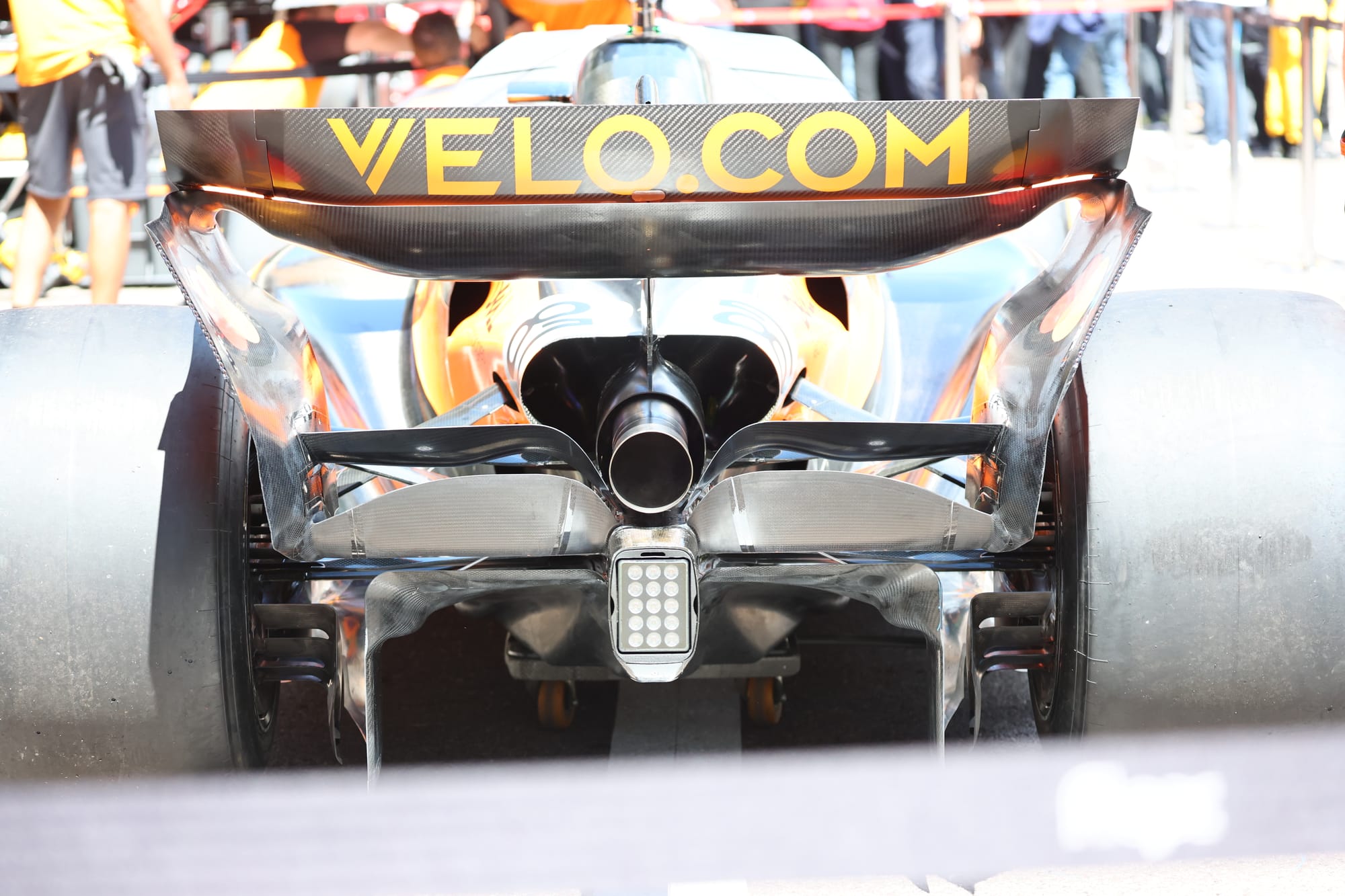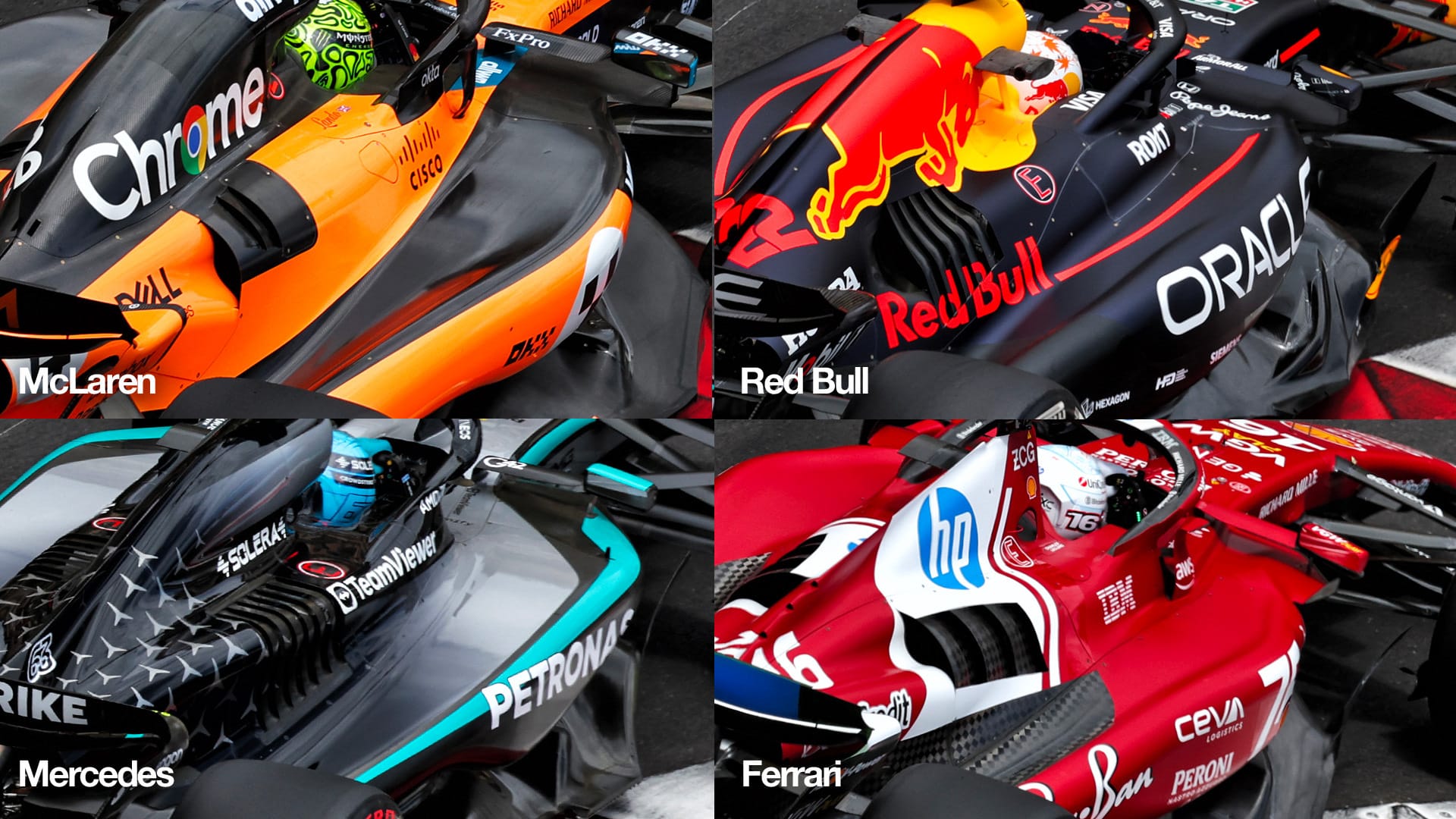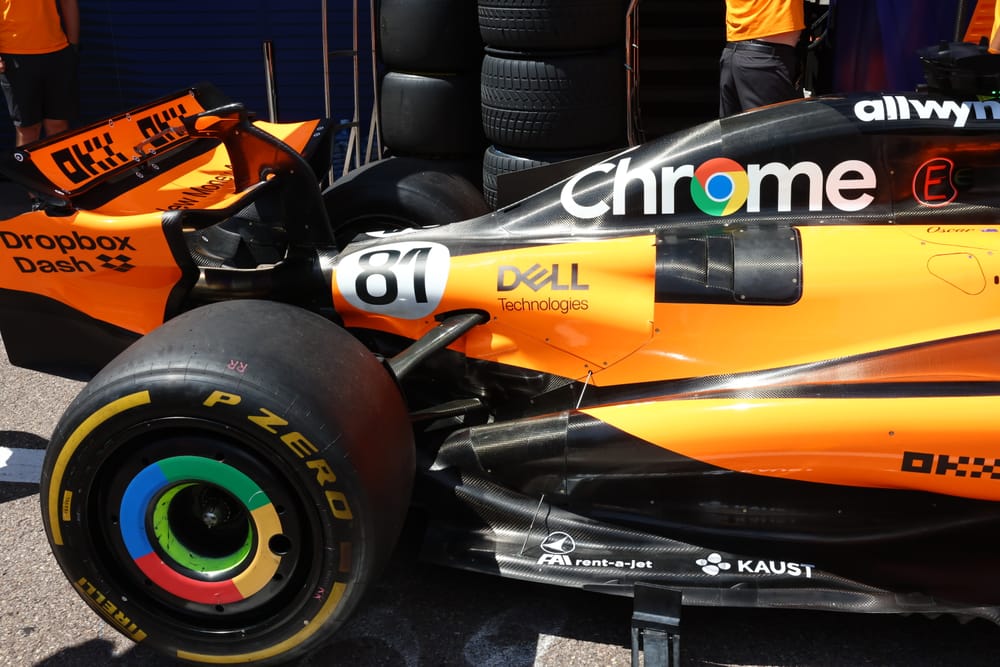McLaren has highlighted how an all-new engine cooling system for its 2025 Formula 1 car is playing an important part in its hot weather advantage.
While much of the focus on McLaren's pacesetting form in the heat has revolved around how it better manages rear tyre temperatures, an important element that is also contributing to its edge revolves around the efficiency of the cooling system.
By being able to keep its customer Mercedes power units in the right temperature window, the team can be more aggressive with its bodywork – closing things off much more than rivals.

This offers an advantage in being able to run bodywork in a more ideal configuration from an aerodynamic point of view – which can bring benefits in terms of less drag and reducing the impact of hot air disturbing the rear wing and diffuser.
Teams running in such a configuration can choose to convert this reduced drag into giving them the freedom to run with higher downforce levels for improved lap time – and potentially better tyre wear.
Monaco configurations
The difference in cooling approaches has been made clear ahead of the Monaco Grand Prix, an event where getting the right cooling levels is a challenge and McLaren's configuration is a clear outlier compared to its main F1 rivals.
The warm temperatures and lack of straights offering more airflow to help teams keep engine temperatures under control mean teams have to take extra precautions compared to some other venues.
Images of the cars in Monaco on Friday show that not only is McLaren's engine exit smaller than some of its main opposition, but it is running considerably smaller vents (comparison below) on the side of the engine cover.

Speaking about the work that McLaren did over the winter to revamp things, team principal Andrea Stella revealed that its design was overhauled completely.
And with rivals having been astonished by the pace of the McLaren in hot conditions – such as day-time practice in Saudi Arabia and Bahrain – he thinks this cooling aspect could offer a decent explanation.
"There's nothing in the cooling system which is the same as last year," said Stella. "It's much more efficient.
"This allows us to run closed when the temperature rises, and we talk about a significant number of milliseconds that we gained compared to last year for a given temperature."
Stella added that one of the elements McLaren had to always weigh up in practice was where its cooling level should be pitched – because it needed to factor in the prospect of running close behind another car which will be throwing off warm air.
"Obviously you always try to run as close as possible, but you need to make some allowances," he said.
"Some of these allowances you can't even experiment in practice: like for instance what is the following effect? What is the following effect of one car? What is the following effect of a train of cars?
"So you try to judge this as well as possible in practice and you try to run as closed as possible.
"But sometimes you have to accept that if you have not done a good enough job in practice, you might have to sacrifice a few milliseconds to be safe, because otherwise you cannot follow other cars."



